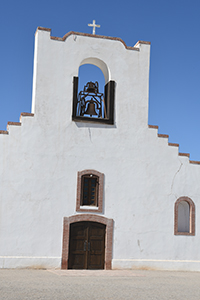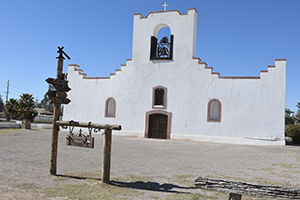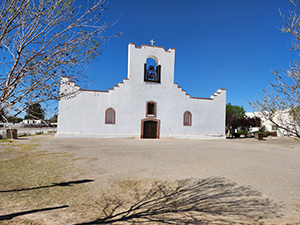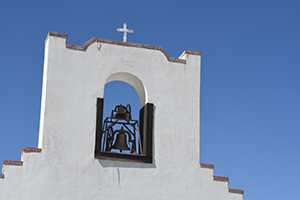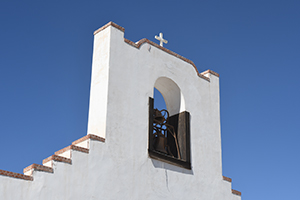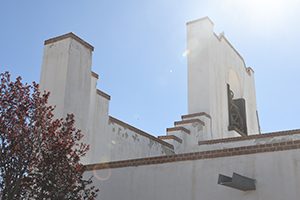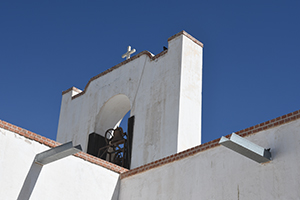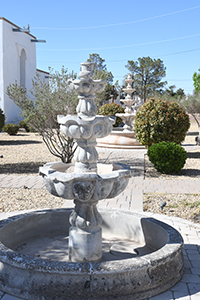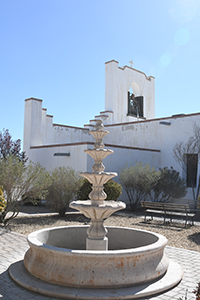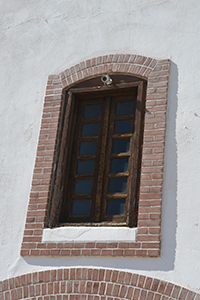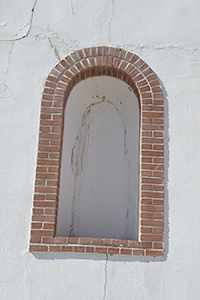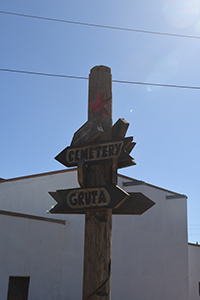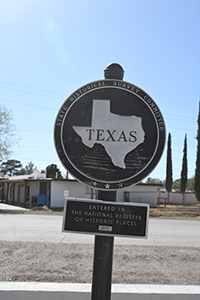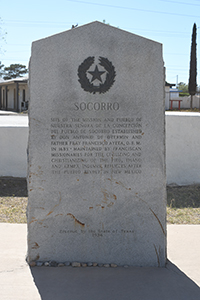Several names seem to be used, depending on the source:
Socorro Mission la Purisima
first permanent adobe church: 1691; Nuestra Señora de la Limpia Concepción de los Piros del Socorro (Our Lady of the Immaculate Conceptionof the Piros of Socorro)
Pueblo and Mission Nuestra Señora de la Limpia Concepción del Pueblo de Socorro by Don Antonio de Otermin and FatherFray Francisco Ayeta, O. F. M.
Nuestra Señora de la Limpia Concepción de los Piros del Sur
Misión de Nuestra Señora de la Limpia Concepción de los Piros de Socorro by Governor Diego de Vargas in 1691.
The mission has had several designations: San Pedro de Alcantará, La Limpia Concepción, La Purísima Concepción, San Miguel, and La Purísima.
Spanish occupation dates to 1581 due to it's location on the Camino Real betwen Mexico City and Santa Fe. The Mission was established by Governor Don Antonio de Otermín, Father Francisco de Ayeta, Piro Indians, and Spanish refugees out of Socorro, New Mexico following the Pueblo Revolt of 1680. The Pueblo was possibly established October 13, 1680. The Mission and Pueblo of Nuestra Señora de la Limpia Concepción del Pueblo de Socorro was established in 1683 by Don Antonio de Otermin and Father Fray Francisco Ayeta, O. F. M. Serving Piro, Thano, and Gemex Indians.
The first permanent adobe church was built in 1691, named Nuestra Señora de la Limpia Concepción de los Piros del Socorro (Our Lady of the IOmmaculate Conceptionof the Piros of Socorro). Fray Joaquín de Hinojosa accepted royal titles to the first permanent Mission in 1692. Some residents returned to New Mexico, but the community continued to grow, mostly Piro.
The Rio Grand Valley became part of Mexico in 1821. The church was destroyed by a flood in 1829 and because of a shift in the river, the three Missions and communities were on the Texas side. Constructing a replacement church began, concluding in 1840 and dedicated August 1, 1843, the current building. With the Treaty of Guadalupe Hidalgo in1848, the El Paso valley became part of the United States. Franciscan Monks ran the Mission for 172 years. Later Diocesan Priests, Italian Jesuits, Mexican Jesuits. The Jesuits came in 1881 and brought many changes.
Today, the church serves the parish.
| |



